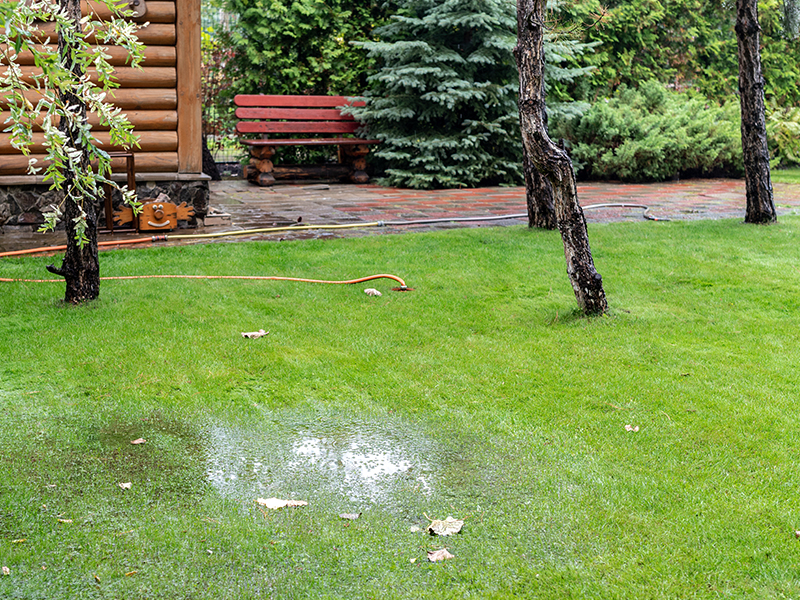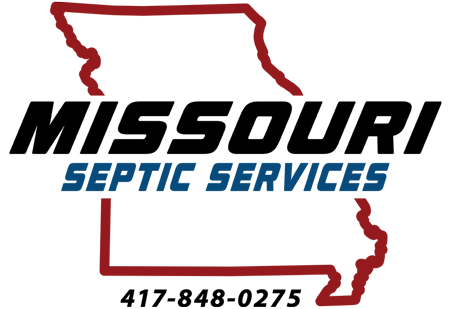Hours: Mon – Fri 7:30am – 7:30pm
Septic systems require regular maintenance and repairs to function correctly. In a septic system, the drain field filters wastewater before it enters the soil. A clogged drain field can cause backups and foul odors over time. Missouri Septic Services can help. We specialize in drain field repair and replacement in Springfield, MO, to keep your septic system running smoothly. Check out these signs your drain field may need repairs and how our team can assist you.
What is a Septic Drain Field?
A septic leach field, or septic system, is an array of underground pipes and trenches that process wastewater from residences and businesses. The system works by separating liquid waste solid waste. The solid waste settles at the bottom of the tank, forming a sludge. And the septic system disperses effluent (treated wastewater) into the surrounding soil, where it can be naturally filtered and broken down. Drain fields typically comprise several components, including a distribution box, pipes, gravel beds, filter fabric, and drain lines.
Definition of a Septic Drain Field:
A drain field is an underground collection of pipes and trenches designed to disperse treated wastewater from homes or businesses into the surrounding soil for natural filtration.
A septic tank is connected to the drain field through a network of pipes. These pipes transport wastewater from the septic tank to the drain field, which soil microbes can naturally filter and break down. The effluent then percolates into bedrock or other subsurface areas for further filtration. This process helps keep the environment safe and clean by preventing groundwater contamination.
A typical drain field consists of a distribution box that evenly distributes effluent, perforated plastic pipes for slow water release, gravel beds acting as filters, filter fabric to keep debris at bay, and drain lines connecting all the components together. The septic system is designed to disperse treated wastewater from homes or businesses into the surrounding soil for natural filtration.
Key Takeaway: A drain field is an underground system of pipes and trenches designed to treat wastewater from homes or businesses by dispersing it into the surrounding soil. The typical components of a drain field include a distribution box, perforated plastic pipes, gravel beds acting as filters, filter fabric for debris control, and connecting lines that tie all these elements together – making it an effective way to get rid of treated water in no time flat.
Common Causes of Septic Drain Field Damage
Poor Septic Tank Installation or Design:
The EPA says, “Most septic systems malfunction because of inappropriate design or poor maintenance.”Incorrect drain field installation for a septic system can cause significant damage.
Improper sizing, incorrect grade and elevation, and inadequate spacing between pipes are all common issues that can cause problems with the system’s ability to filter wastewater effectively. Additionally, poor design choices, such as using too few leach lines or not providing enough area for absorption, can create backups in the system and eventually lead to failure.

Overloading the Septic System with Too Much Waste:
Septic system failure can be more than just an unpleasant experience; it can pose significant health and safety risks.
Homeowners should watch for warning signs that indicate the need for septic system repair. A septic system is designed to handle only so much waste before they become overwhelmed and start backing up into other areas of the home or yard. If your household produces more waste than your septic tank is designed for, it will quickly overflow. These backups occur when a clogged or slow system causes blackwater (sewage) to flow back into sinks, tubs, and toilets. Backups produce foul odors and are hazardous to one’s health.
It’s crucial to have a septic tank that is the appropriate size for your household’s needs. If your septic tank is too small, it will quickly become overloaded and unable to handle the amount of waste your household produces. When this happens, excess water and waste will be forced into the drain field, causing potential damage. Drain fields filter and disperse wastewater into the surrounding soil, where it can be absorbed safely. However, suppose too much water is forced through it simultaneously. In that case, the ground becomes oversaturated, leading to sewage backups in your home or contamination of nearby water sources. To avoid these problems, it’s essential to have an appropriately sized septic tank system installed and maintained by professionals like Missouri Septic Services. Regular septic tank pumping and inspections can also help prevent the overloading of your septic system and ensure its longevity.
Tree Roots and Other Debris Clogging the System:
Tree roots tend to get into septic tanks over time, often clogging up pipes and restricting flow throughout the system. This causes blockages in both above-ground piping and underground drainage fields, leading to flooding on your property if left unchecked for long periods. In addition, foreign objects like plastic bags or food scraps that make their way down the drain also contribute significantly to clogged pipes by creating physical obstructions within them.

Key Takeaway: Poor installation, design, and overloading of septic systems can cause severe damage due to improper sizing, incorrect grade elevation spacing, and inadequate absorption area. Tree roots and debris clogging the system can lead to flooding if left unchecked for too long – it’s a case of “too much of a good thing” in this situation.
Septic Drain Field Repair
Assessing the Damage and Identifying the Problem Areas:
The first step in repairing drain fields is to assess any damage and identify problem areas. This can be done by visually inspecting the system, looking for signs of leakage or blockage, and checking for clogs or root infiltration. For a more thorough analysis, it is recommended to contact Missouri Septic Services, your Southwest Missouri septic systems experts, who can use specialized tools to determine the precise source of any potential issues.
Removing Debris and Replacing Damaged Pipes or Components:
Once any damaged components needing replacement have been identified, it’s time to remove debris around them. This may involve digging up sections of pipe if necessary and carefully cleaning out roots or other obstructions that could be blocking flow through your entire septic system. Once all obstructions have been cleared, replacement pipes should be installed to replace those that couldn’t be salvaged.

Installing New Piping or Regrading the Soil for Improved Flow:
In some cases, installing updated piping may not be enough; soil compaction over time can reduce drainage capabilities in certain areas of your drain field. Regrading the soil around the drain field is recommended to combat this problem. Hence, water flows more freely throughout its entirety again. Depending on how severe an area’s compaction is, additional measures, such as aeration, might also need to be taken before regrading begins to ensure maximum efficiency when finished.
In order to ensure that your system is working correctly after you replace system components, it should always be tested before it is going to be used again. This will help confirm whether everything was done correctly during installation and ensure no further problems arise due to maintenance neglect afterward. Testing typically involves running water through each component at various pressures while measuring levels with specialized equipment – only professionals experienced in these tasks should handle this job.
Key Takeaway: We need to identify any problem areas, replace damaged pipes, regrade the soil for improved flow, and test everything before using the system again. To make sure that this repair job is successful, it is recommended that you call a professional septic service. This will enable you to accurately diagnose any issues and thoroughly check your drain field.
Conclusion
If you’re a homeowner with a septic system in Springfield, MO, and your drain field is damaged or clogged, don’t hesitate to contact Missouri Septic Services for professional septic drain field repair. Our experienced technicians can quickly diagnose the issue and provide reliable solutions to restore your system to optimal functioning. With our help, you can know that your septic system is running safely and efficiently.Contact Missouri Septic Services, Your Southwest Missouri Septic Systems Experts
If you’re a homeowner with a septic system, having a reliable and trustworthy provider for all your septic needs is essential. That’s where Missouri Septic Services comes in. As a family-owned and operated business based in Springfield, MO, we pride ourselves on providing environmentally friendly sewage and non-hazardous wastewater disposal services and expert septic system repairs and installations. Our team of experienced technicians is trained to handle any issue that may arise with your septic system, including drain field repairs. We understand the importance of keeping your septic system functioning correctly, not just for the health and safety of your family but also for the environment. That’s why we use eco-friendly methods to dispose of waste and ensure that our services always comply with local regulations. Contact us today to learn how we can help keep your septic system running smoothly while minimizing its environmental impact.

Areas We Serve Include:
- Battlefield, MO
- Billings, MO
- Branson West, MO
- Branson, MO
- Clever, MO
- Crane, MO
- Fair Grove, MO
- Fordland, MO
- Fremont Hills, MO
- Galena, MO
- Highlandville, MO
- Hurley, MO
- Marshfield, MO
- Nixa, MO
- Ozark, MO
- Republic, MO
- Rogersville, MO
- Seymour, MO
- Sparta, MO
- Springfield, MO
- Strafford, MO


